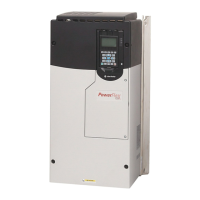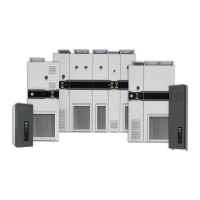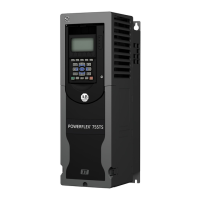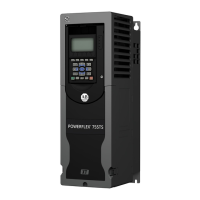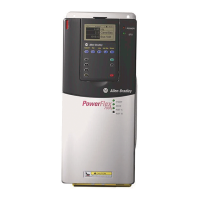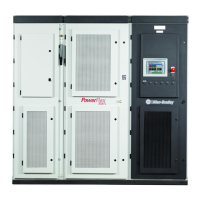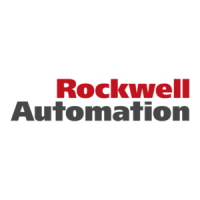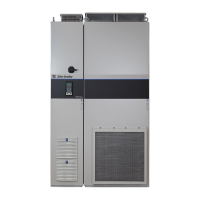





Do you have a question about the Rockwell Automation Allen-Bradley PowerFlex 750 Series and is the answer not in the manual?
| Category | DC Drives |
|---|---|
| Series | 750 Series |
| Output Voltage Range | 0 to Input Voltage |
| Control Method | Vector Control, V/Hz Control |
| Communication Protocols | EtherNet/IP, ControlNet, DeviceNet, Modbus TCP/IP |
| Enclosure Types | NEMA/UL Type 1, NEMA/UL Type 12 |
| Storage Temperature Range | -40...70 °C (-40...158 °F) |
| Relative Humidity | 5...95% noncondensing |
| Altitude | Up to 1000m (3280 ft) without derating |
| Certifications | UL, CE, cUL |
Identifies critical safety information, hazards, and precautions for safe operation and maintenance.
Provides an overview of the Quick Start guide and its purpose for first-time users.
Defines the intended users and required equipment for this manual.
Outlines installation assumptions and supported application types for the drives.
Details on recording essential system, motor nameplate, and AC power data for configuration.
Guides on documenting signal and control source connections for drive configuration.
Ensures correct jumper settings, power source ratings, and wiring for safe and proper installation.
Validates jumper settings and I/O wiring critical for drive configuration and operation.
Instructions on using the Human Interface Module (HIM) and its navigation features.
Details the procedures for safely energizing the drive for the first time.
Sets motor parameters like voltage, duty, units, control mode, and application selection.
Configures bus regulation, embedded EtherNet/IP adapter, and IP address settings.
Performs a device reset to apply settings and verifies the final configuration.
Configures parameters for the line side converter, including frequency, kVA, and impedance.
Inputting motor nameplate voltage, current, RPM, power, and units for accurate control.
Sets motor poles, overload thresholds, protection class, and thermal parameters for motor management.
Records and configures encoder feedback parameters for Flux Vector control applications.
Configures maximum velocity limits and verifies correct motor rotation direction.
Chooses parameter source and inputs motor inertia value for accurate tuning.
Executes tests to identify motor characteristics and calculate optimal autotune parameters.
Configures the source for velocity reference signals, including HIM and I/O module inputs.
Sets up the velocity reference using the embedded EtherNet/IP communication interface.
Sets up start and stop commands using the Human Interface Module (HIM).
Configures start/stop commands via digital inputs from I/O modules using two-wire or three-wire methods.
Enables start/stop commands through the embedded EtherNet/IP communication interface.
Modifies acceleration and deceleration times to protect the drive and motor from overload conditions.
Sets up analog output parameters to provide signals for monitoring drive status.
Configures digital output parameters for status indication or control signals.
Verifies correct operation and provides troubleshooting steps for configuration issues.
Enables and configures the Predictive Maintenance feature for component life monitoring.
Guides users to further configuration resources and advanced setup topics.
Details methods for resetting the drive to factory defaults or specific configurations.
Explains the meaning of drive status indicators on the HIM for operational monitoring.
Discusses configuration for line side converters and high inertia loads, including alarms and times.
Manages HIM functions like disabling start keys and copying drive parameters.
Provides equations and guidance for calculating AC line impedance in systems with line reactors.

